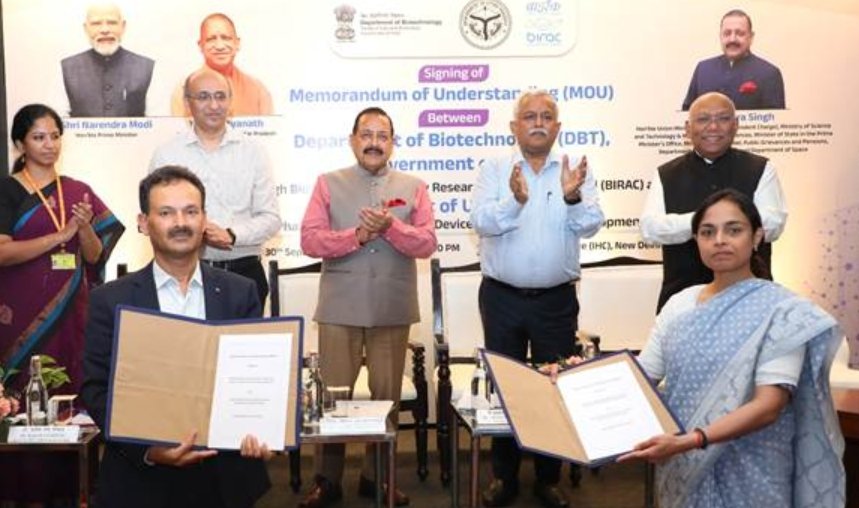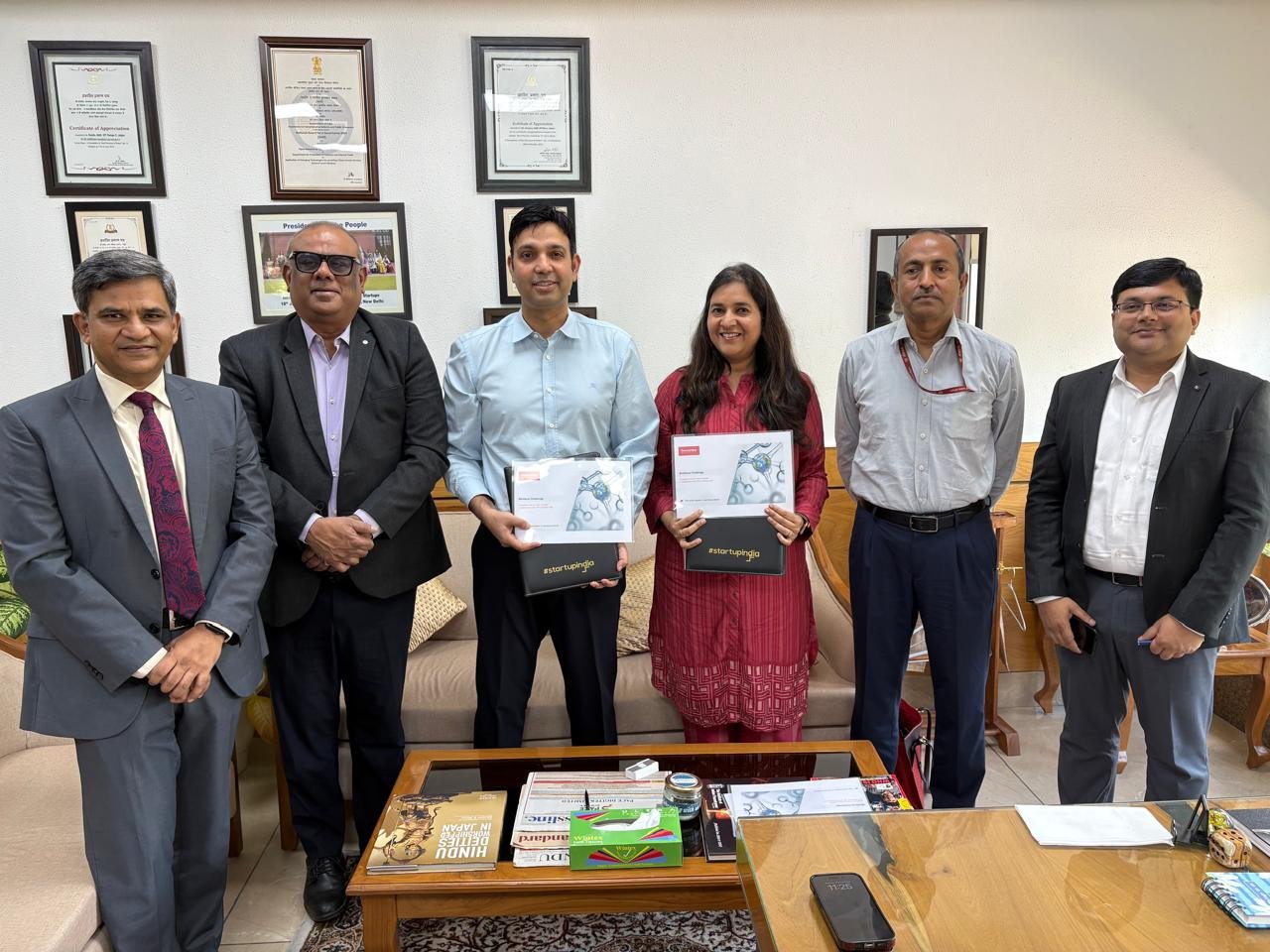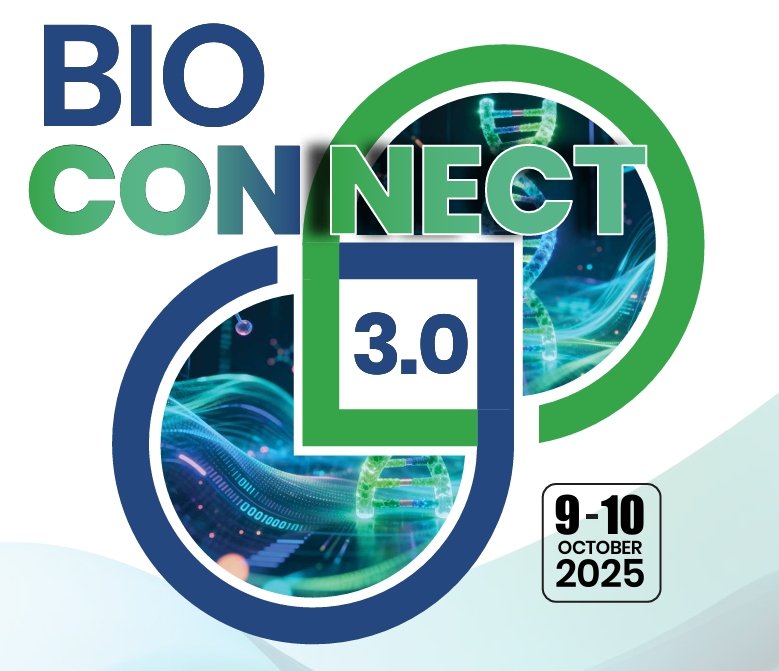“The ecosystem of Gujarat is ready to promote deep tech areas of biotech product development”
January 31, 2025 | Friday | Views | By Ankit Kankar
Gujarat has more than 200 biotechnology companies and a thriving startup ecosystem that includes prominent R&D and educational institutes. Gujarat's biotech sector generates more than Rs 12000 crore revenue and serves as an established biomanufacturing hub. Playing a key role in this direction is the Gujarat State Biotechnology Mission (GSBTM) which has completed 20 years. The Government of Gujarat (GoG) had established GSBTM in April 2004 under the Department of Science and Technology to facilitate the development of the biotech sector. In conversation with BioSpectrum, Manish Gurwani, Mission Director, Gujarat State Biotechnology Mission elaborates on how GSBTM’s latest biotechnology policy is transforming the sector in Gujarat.
How does the GSBTM plan to leverage infrastructure and incentives under the current policy to position the state as a globally competitive biotechnology hub?
Known for its entrepreneurship spirit, Gujarat has continued to be one of the preferred investment destinations for Ease of Doing Business (EoDB), Good Governance Index (GGI), Energy & Climate Index, Startup & LEADS ranking. The state contributes 40 per cent to India’s total cargo throughput with ~8.2 per cent in India’s GDP (as on FY2022-23 on current price). The state accounts for $12 billion (2023) with 8 per cent share of Bio-economy, way above ~4 per cent state-wise average contribution of Bio-economy, amongst top 5 states of India in terms of Bio-economy contributors. This is the result of its top-class trunk and core infrastructure coupled with a safe and sound social environment in attracting top entrepreneurs from various parts of the country and abroad.
Gujarat showed great foresight, by setting up a dedicated mission office two decades ago, the Gujarat State Biotechnology Mission (GSBTM) followed by eco-system strengthening initiatives like Gujarat Biotechnology Research Centre (GBRC), Gujarat Biotechnology University (GBU) – Asia’s first ever dedicated biotechnology university and one of the top 5 public incubators Savli Technology and Business Incubator (STBI) with dedicated biotechnology parks for greenfield and brownfield spaces. These initiatives indicate Gujarat’s readiness to attract top biotech players in one of the thriving biotech ecosystems. GSBTM not only operates different schemes for facilitation of biotechnology, but is also the single window clearance office for all purposes, bringing in ease of doing business.
An additional advantage to the biotechnology business in the state is the Biotechnology Policy 2022-27. The policy offers substantial incentives such as 25 per cent capital assistance with a ceiling of Rs 200 crore for mega projects, operational assistance for research initiatives, and employment generation schemes like Aatmanirbhar Gujarat Rojgar Sahay.
Could you elaborate on specific initiatives like the Gujarat Genomics Initiative or the Marine Bioresource Centre, and how they are progressing?
The Department of Science and Technology, in 2017, created GBRC by merging several initiatives including Gujarat Genomics Initiative, Marine Bioresource Centre etc. GBRC is established with a vision to undertake cutting edge translational research in the diverse areas of biotechnology including healthcare, agriculture, marine and industrial biotechnology. Today GBRC is undertaking several international, national and state funded research projects with more than Rs 100 crore outlay. The GBRC team was part of the highly competitive Global Challenge Research Fund programme of UK Research and Innovation, One Health Poultry Hub. Some of the National flagship research programmes of GBRC include, Genome India Initiative, Genomic Selection Network for Dairy Cattle and Buffalo Breeds in Gujarat, Network Programme on Antimicrobial Resistance, Superbugs and One Health etc. During COVID-19, GBRC team contributed in genome sequencing of SARS-COV-2, establishing waste water epidemiology, understanding host pathogen interaction, identifying the virus from non-human hosts resulting in efficient pandemic management in the state. Recently, the Ministry of Earth Sciences, Government of India has sanctioned a large consortium project under Deep Ocean Mission where GBRC is in lead role, extending the works of Marine Bioresource Centre. GBRC also acts as a shared laboratory facility by extending its existing infrastructure to relevant stakeholders through an online booking system.
The Biotech Policy (2022-2027) aims to attract Rs 20,000 crore in investments and create 1.2 lakh jobs by 2027. What strategies are being implemented to meet these ambitious goals, and what progress has been made so far?
The policy is loud on the strategy, where it has spelled out the Mega Projects, Ecosystem Strengthening and Special Projects. These categories of projects would see a capital support of up to Rs 200 crore and an Operational Expenditure support of up to Rs 125 crore. The interest subsidy on Term Loan @7 per cent on borrowings up to Rs 100 crore and @3 per cent on borrowings above Rs 100 crore, is a strong contribution of the state government to get the economy rolling for the biotech space, eyeing the target investment of Rs 20,000 crore. The past edition of the policy incentives has seen approximately 16 times the investment by the private sector, on the government contribution. GSBTM having dedicated arms for facilitating entrepreneurship and HRD development coupled with handholding support for BT unit establishments showcases the great support system for incoming investments. This feat gives the state government confidence that the goals set in the new policy are attainable.
In July 2023 and December 2023, GoG has inked MoUs worth ~Rs 9000 crore with an expected employment generation of 3000, in the biotech sector. More than 20 companies have committed this investment and will be contributing to the sectors and products, most important for the state.
Employment Generation Incentive, i.e. Aatmanirbhar Gujarat Rojgar Sahay, is a new element added to this edition of the policy, which focuses on engaging local manpower, with a one time incentive of Rs 50,000 per male and Rs 60,000 per female CTC, to the companies establishing base or expanding in the state. The EPF Assistance of the policy also is providing a generous support of 100 per cent EPF support for female employees and 75 per cent EPF for male employees.
Mega projects are a highlight of the policy. Could you share insights into any ongoing or upcoming mega biotech projects in Gujarat, and their expected contribution to the state's bioeconomy?
Mega biotech projects in Gujarat are pivotal for driving the state’s bioeconomy. Some very thoughtful initiatives have come up in this section of applications. These involve rDNA vaccines, RNA interference vaccines, Fermentation based APIs and rDNA therapeutic enzymes. Not only the size of these operations, but, the technological leap that these projects could bring to the sector in the state, would be enormous, setting new trends in biotechnology. These projects are expected to generate significant revenue by operating in volumes, create high-value jobs, and establish Gujarat as a global biotech leader. Their multiplier effect on ancillary industries will further boost the state’s economic and innovation landscape.
How do you envision the biotech landscape evolving in Gujarat, particularly in emerging sectors like synthetic biology, gene therapy, and bioinformatics?
The ecosystem of Gujarat to promote these deep tech areas of biotech product development is ready. The Biotech Park in Vadodara, Savli Technology and Business Incubator and the upcoming infrastructure project to support the sector are all set to support research and developmental activities in these areas. GBRC has developed a comprehensive facility in the bioinformatics space, which serves an end-to-end solution in bioinformatics research. The centre is also the central data repository for One Health Programme and AMR Network Project of the state. The state has also expanded the super-computing abilities by installing 16 super computers in different institutes of the state. These super-computers are spread across the state and contribute to research and capacity building.
The private sector in the biotech space is investing heavily in the areas of synthetic biology and gene therapy, and have already initiated product development which is focused on customised therapeutics. As it is known that these products require a delivery partner to reach the product to the end user, the private sector is playing a pivotal role in doing the same.
The state is ready to embrace these new era technologies, and place Gujarat on the world map with its products. Gujarat is well-positioned to be at the forefront of these transformative sectors.
With the introduction of the Gujarat Biotech Start-Up Venture Fund (GBSVF), what impact do you foresee on biotech startups in Gujarat, especially in terms of funding and scaling up?
The Gujarat Biotech Start-Up Venture Fund is a game-changer for biotech startups and clearly declares the proactive risk taking appetite of the state government. Unhesitant, the state government has contributed approximately 9 per cent to the corpus of the Rs 150 crore fund. The fund is still building up, and is in its investment phase. It provides equity-based financing to early-stage startups and MSMEs, addressing critical funding gaps. By fostering innovation and reducing financial barriers, GBSVF enables startups to develop, validate, and commercialise their technologies.
The fund is supporting startups in upcoming technology areas, making the biotech ecosystem more vibrant and setting up a new league of deep tech startups in the state.
How does the state ensure alignment of its biotech initiatives with national programmes like ‘Atal Jai Anusandhan Biotech UNaTI Mission’ and global trends in biotechnology innovation?
‘Atal Jai Anusandhan Biotech UNaTI Mission’ was launched in 2019, for 5 years, which was focused on delivering technologies that are important for the country, like safe child birth, affordable vaccines, nutrition for all, Antimicrobial Resistance (AMR) and Clean Energy. GSBTM with its three pillars of execution, namely, research and development supporting 100+ projects, human resource development, skilling 2000 students annually and business development, is working towards these goals. The network project on AMR is a key catalyst in surveying, identifying and providing control strategies to stop spread of AMR in the environment. The programme aims at continuous surveillance and communicating the same to relevant stakeholders, for better results.
The Biotechnology Policy has identified Biofuels as a special project, providing a special package of grants to propel the sector. The recognition of this technology as an important contributor to Clean Energy, and government initiative to encourage entrepreneurship in this area, falls in congruence with UNaTI mandate. The strength of vaccines to make a society disease free, thus reducing the economic burden of diseases in a society is well understood by the state. State grown Zydus Lifesciences was the first to launch ZyCoV-D, which was a children-safe Corona vaccine to be developed in India.
Ankit Kankar
ankit.kankar@mmactiv.com










